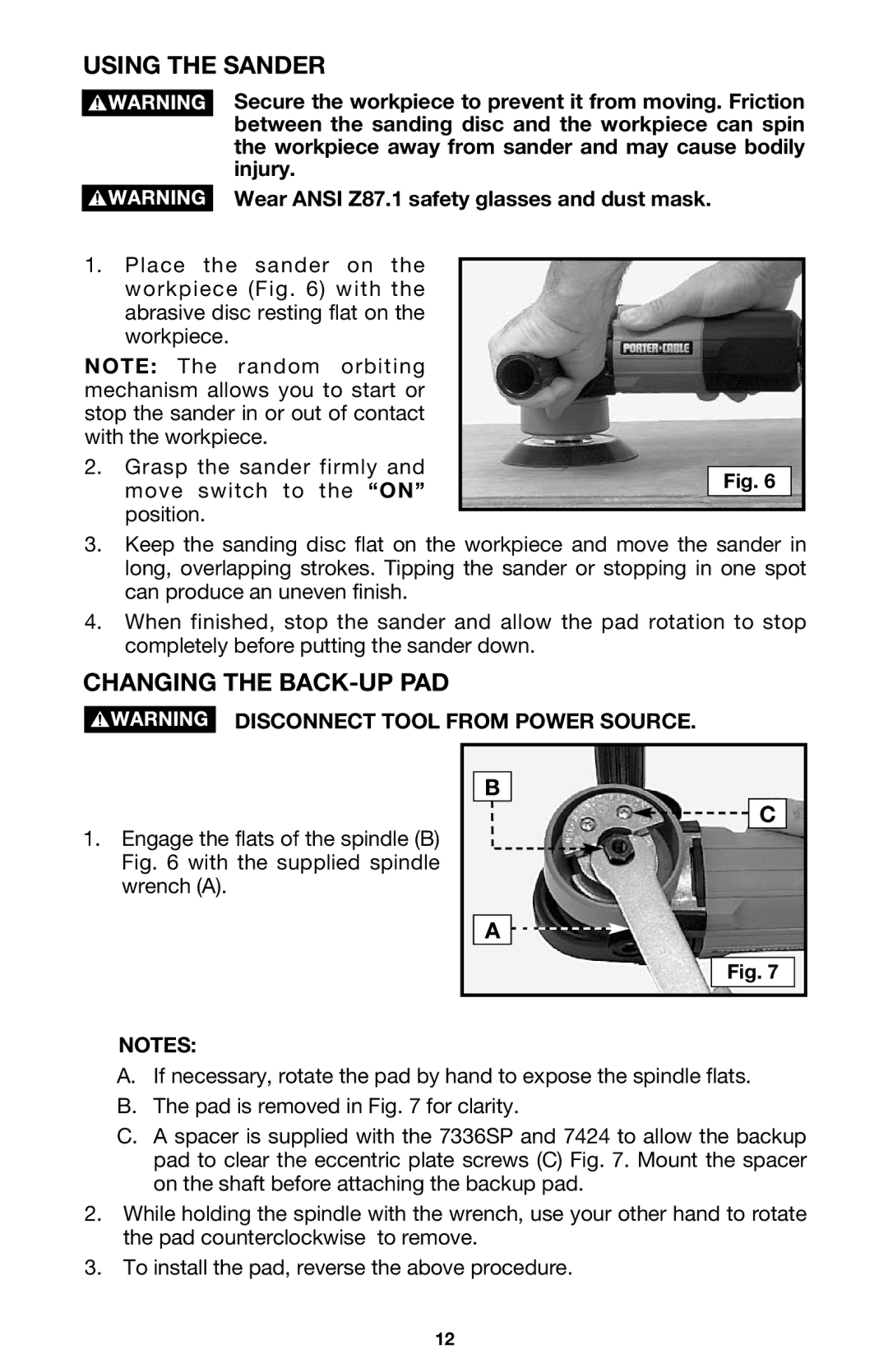
USING THE SANDER
Secure the workpiece to prevent it from moving. Friction between the sanding disc and the workpiece can spin the workpiece away from sander and may cause bodily injury.
Wear ANSI Z87.1 safety glasses and dust mask.
1.Place the sander on the workpiece (Fig. 6) with the abrasive disc resting flat on the workpiece.
NOTE: The random orbiting mechanism allows you to start or stop the sander in or out of contact with the workpiece.
2.Grasp the sander firmly and move switch to the “ON” position.
Fig. 6
3.Keep the sanding disc flat on the workpiece and move the sander in long, overlapping strokes. Tipping the sander or stopping in one spot can produce an uneven finish.
4.When finished, stop the sander and allow the pad rotation to stop completely before putting the sander down.
CHANGING THE BACK-UP PAD
DISCONNECT TOOL FROM POWER SOURCE.
1.Engage the flats of the spindle (B) Fig. 6 with the supplied spindle wrench (A).
B
![]()
![]()
![]() C
C
A![]()
Fig. 7
NOTES:
A.If necessary, rotate the pad by hand to expose the spindle flats.
B.The pad is removed in Fig. 7 for clarity.
C.A spacer is supplied with the 7336SP and 7424 to allow the backup pad to clear the eccentric plate screws (C) Fig. 7. Mount the spacer on the shaft before attaching the backup pad.
2.While holding the spindle with the wrench, use your other hand to rotate the pad counterclockwise to remove.
3.To install the pad, reverse the above procedure.
12
